February 2019. My last posting, “Monarch Field of Dreams: Reprise,” came at the end of September. Now I should explain why it’s been so long since I’ve written anything here. I’ve just returned to my home base in a Washington DC suburb after nearly four months at Cascade Head on the Oregon Coast. At the end of my last story, about rearing and releasing monarch butterflies, I explained my impending westward “migration” thusly:
This reprise of my monarch field of dreams comes at another cusp in my own peregrination. It’s happening just as I’m getting ready for my own “migration,” on a creative sabbatical from my consulting work, to be the resident ecologist at the Sitka Center for Art and Ecology, at Cascade Head on the central coast of Oregon, from October to mid-January 2019. I plan to sink as deeply into the place as I can, learn about its ecology and meet the people who live there and love it, and write about that experience.
The word “sabbatical” is usually associated with academic careers, but it of course echoes the seven-day religions, where the seventh-day, the “sabbath,” is a day of rest, of reflection, of looking back on all that was made. But you can also imagine a “sabbatical” more openly, as a reconnection with roots and quests, missions and visions. For me, returning to the Oregon coast will be a reconnection with the roots of my love of nature, seeded in the tidepools at Cannon Beach when I was five years old, and an attempt to pay back a bit of that debt.”
So now I want to begin to report back on all that. In future posts I’ll share more stories from Sitka, as I try to capture and make sense of all I experienced and learned there.
——-
My three-and-a-half month mini-sabbatical in Oregon was thanks to the Sitka Center for Art and Ecology, a small and unique non-profit organization, which selected me as their Fall 2018 Ecology Resident. Its quiet rural campus, sheltered by giant old Sitka spruce trees for which it is named, is situated near the mouth of the Salmon River on the southern flank of Cascade Head, not far north of Lincoln City.
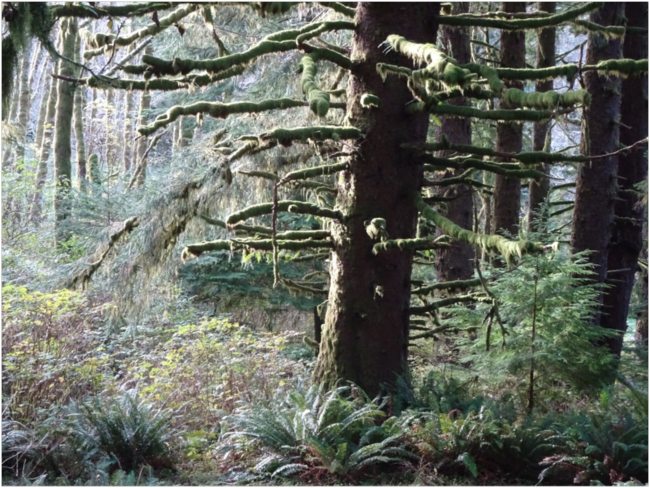
The Sitka Center is located within the Cascade Head Biosphere Reserve, one of 29 areas in the United States that are part of an international network of 686 biosphere reserves in 122 countries, organized under the auspices of the United Nations Educational, Scientific, and Cultural Organization (UNESCO). Cascade Head is Oregon’s only biosphere reserve, and one of only five on the entire US Pacific Coast. It was established as a representative example of the coastal temperate rainforest ecosystem of the Pacific Northwest.
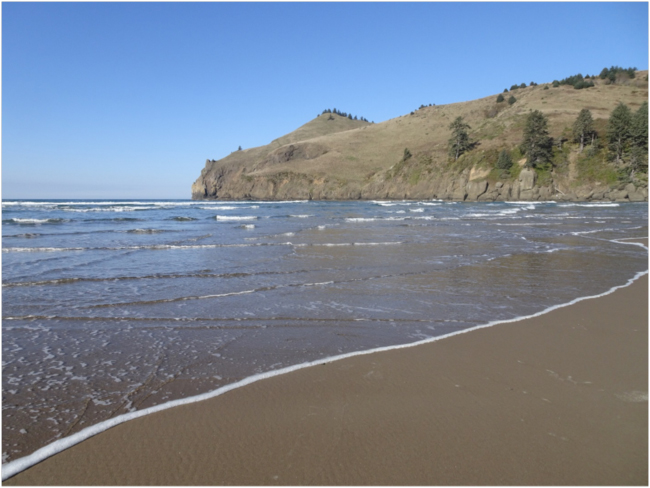
In my proposal to the Sitka Center, I offered to work with the people and institutions involved in the conservation and management of the area, and offer information and advice based on my ecological consulting experience, if and as they requested. I’ve visited 27 biosphere reserves in 17 countries as part of my consulting work, and I hoped I could bring a comparative perspective to Cascade Head that might be useful there. I knew I would find plenty to see and learn about; the other part of my proposal for the Sitka ecology residency was to write a collection of essays about the place.
——-
I arrived at Sitka on October 2nd, a glorious sunny fall day, after a long drive from the East Coast. Vine maples were blazing red under dark evergreens as I drove the last stretch out of the Willamette Valley, over the Coast Range, and down the Salmon River. I moved into Morley House, one of the comfortable lodgings assigned to Sitka residents; more vine maples blazed outside the big south-facing windows of the house, often filled in the October days ahead with juncos and fall warblers. On a landing between the first and second levels, a writing desk faced a large round window with a view toward the ocean across the sloping meadow where wandering herds of elk sometimes grazed.
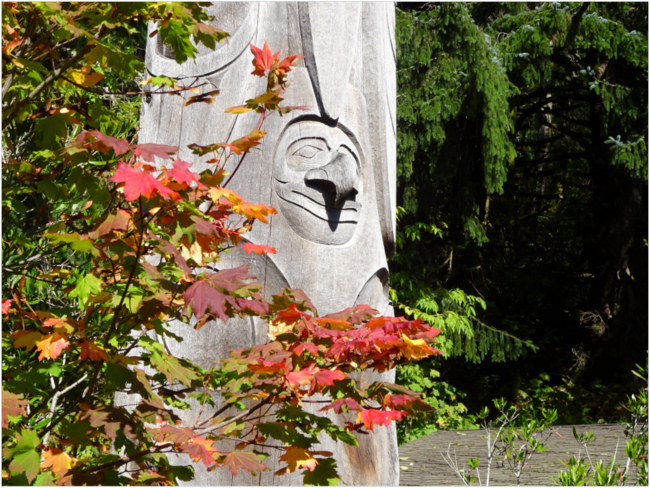
My fellow residents included a visual artist who uses photography and other media to explore natural themes; an installation artist who arranges and sculpts discarded objects to make environmental statements; a guitar-playing singer and songwriter; an American printmaker trained in traditional Japanese woodblock printing; and the current poet laureate of Oregon. Our discussions about the relationship of “art and ecology” were stimulating; it’s a topic I’ve been thinking and writing about for many years. In the Sitka environment, my creative imagination was well-nourished.
——-
UNESCO biosphere reserves are supposed to be laboratories for understanding the relationships between human societies and the ecosystems on which they depend, and models for making the human-nature balance more sustainable and resilient. The designation of Cascade Head as a biosphere reserve in 1976 built on a foundation of forest protection and research reaching back to 1908, when it was included in the US national forest system as part of the Siuslaw National Forest. In 1974, an act of Congress established the Cascade Head Scenic Research Area, including not only the forests and coastal grasslands of Cascade Head itself, but also the estuary of the Salmon River to the south. Under the jurisdiction of the US Forest Service, the objective of the Scenic Research Area was: “To provide present and future generations with the use and enjoyment of certain ocean headlands, rivers, streams, estuaries, and forested areas, to insure the protection and encourage the study of significant areas for research and scientific purposes, and to promote a more sensitive relationship between man and his adjacent environment.” As such, it meshed well with the objectives of the UNESCO Man and the Biosphere Program.
A suite of words with the prefix “re” describe some of the important milestones in the history of the Cascade Head “laboratory” of the human-nature relationship: resistance, research, restoration, reconciliation, and resilience. “Re”, originally from Latin, means “again,” and the “re”s remind us that we humans have a lot of work to do to again get back in balance with the Biosphere.
Resistance to actions that would have damaged or destroyed important elements of nature at Cascade Head was a first, critical ingredient here. First came resistance against the greedy, unsustainable logging being promoted by Oregon companies and politicians that motivated President Theodore Roosevelt and his first Chief of the US Forest Service, Gifford Pinchot, to create the Siuslaw National Forest in 1908. In 1974, resistance to unregulated vacation home and tourism development motivated the creation of the Cascade Head Scenic Research Area. And in 1976, resistance to the view that human social and economic development and the conservation of nature and are opposed and contradictory led to Cascade Head becoming a UNESCO biosphere reserve. The history of the Sitka Center for Art and Ecology is intertwined with the history of the Cascade Head Scenic-Research Area and the Biosphere Reserve. All developed in the early 1970s, an era when environmental concern was growing rapidly. Now, with an administration in Washington DC that is anti-science, working to undo decades of environmental protections, and opposed to international engagement, especially with the United Nations, continuing local support for a UNESCO biosphere reserve here is another act of resistance.
Research at Cascade Head was made possible and enabled by the resistance here to the forces that had damaged ecosystems in many other places. Already part of the Siuslaw National Forest, a large part of Cascade Head was set aside as an experimental forest by the U.S. Forest Service in 1934, and part of that was set aside as the Neskowin Crest Research Natural Area in 1941 – a “reference” ecosystem for learning how these coastal temperate rainforests function. An example of some of the groundbreaking research done here, in 1935 a curious Forest Service scientist decided that rather than just let natural forest regeneration occur on an old farm in the area, experimental plots should be created where both conifers (Sitka spruce, western hemlock, and Douglas fir) and alders were allowed to grow, but on other plots all the conifers were cut, and on others all the alders. Thirty years later that curiosity allowed the next generation of forest scientists to show that alders suck nitrogen from the air and pump it into the soil, fertilizing the conifers, which grow better when sharing the ground with alders than when they are alone. Examples of the curiosity of scientists and the serendipity of their research are common here, and the research record provides a valuable baseline for future research, especially related to the effects of climate change in these coastal ecosystems.
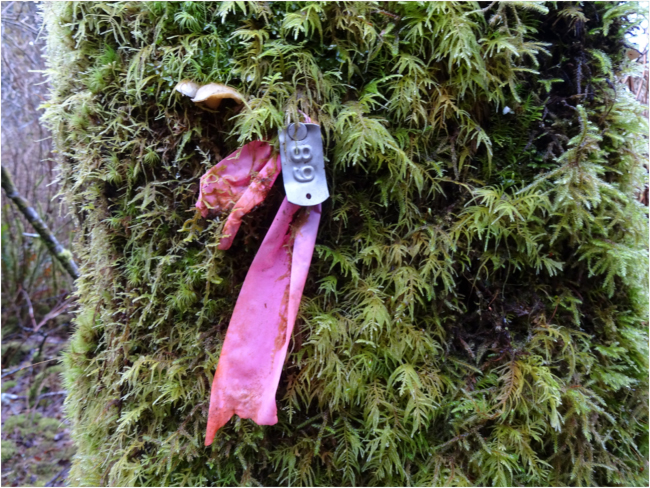
Restoration of natural ecosystems is another hallmark of the Cascade Head story. The Cascade Head Scenic Research Area Act of 1974 provided a legal framework and some funding for the US Forest Service to begin removing dikes and tide gates and restoring natural tidal flows to areas of the Salmon River estuary that had been converted to dairy pastures starting the 1930s. This estuarine restoration, carried out in stages beginning in 1979, created a kind of ecological experiment through which, decades later, fish biologists could study the use of the restored saltmarsh by juvenile coho and Chinook salmon, and show that they feed in those habitats far more than anyone had ever thought, and that those fish increased the number of adult salmon returning to spawn years later. Natural life-history diversity in Salmon River salmon populations began to be restored because of the restoration of the estuary. So at Cascade Head, ecological restoration and research are linked in a positive feedback loop, helping us understand ecosystems better and maintaining both biodiversity and its benefits to people.

Reconciliation is a term more commonly associated with social justice – such as in the post-apartheid healing process in South Africa – but a lot of healing is needed between humans and the Biosphere too. “Biosphere reserves are about reconciling all people with the lands and waters,” Eleanor Haine-Bennett, director of the Canadian National Committee for the UNESCO Man and the Biosphere Program, told me in a phone conversation. “The first step in reconciliation is acknowledgement of wrongdoing,” Kathleen Dean Moore, the writer and philosopher, said over coffee at the New Morning Bakery in Corvallis. That applies both to other people and to ecosystems. To reconcile ourselves with Nature we need to acknowledge that we have treated her badly, even if it was inadvertent or not completely our fault.
From Cascade Head we can begin to actually see some ecological “restorative justice” – the restored salt marshes, for example, that have allowed the re-emergence of life history diversity in juvenile salmon. And beavers have come back to Fraser Creek, now restored to its old channel after it was rerouted around Pixieland, a tacky, short-lived amusement park built on filled marshland along the Salmon River in the early 1960s. From Cascade Head, we can envision, if not yet quite view, how restoration of the functioning natural ecosystems of a place can lead toward reconciliation of “all people with the lands and waters.”
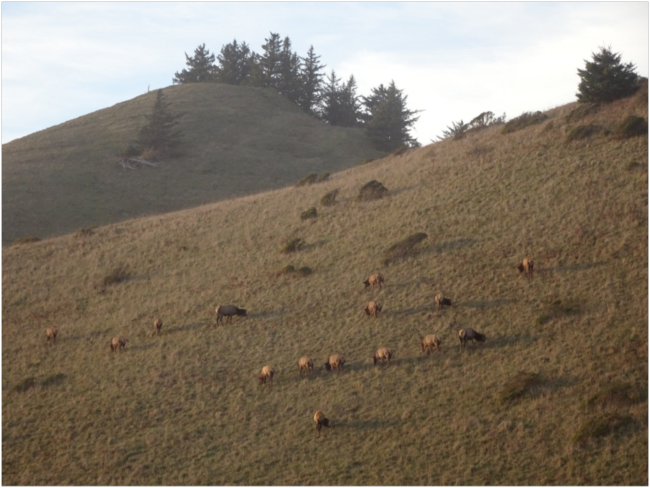
Resilience is a final “re” word in the lexicon of Cascade Head. On a planet that is naturally dynamic and changeable, evolution has so far found adaptive pathways to survival, but our dominant, technological species has caused and accelerated global changes that now stress that resilience in ways that threaten our own existence. At Cascade Head, as everywhere else in the Biosphere, resistance, research, restoration, and reconciliation can lead us on a path toward a more resilient future.
Cascade Head is a microcosm – a small, unique place, but also an exemplary place in the Biosphere because of its history and the efforts that dedicated people have made to defend a certain balance between humans and nature there. The lessons from Cascade Head apply anywhere.
——-
Most local residents, and even many state and federal agency representatives who manage the fish, forests, and other natural resources in the area, generally don’t know much about the Cascade Head Biosphere Reserve, if they are even aware of it. During various presentations I made about the Cascade Head Biosphere Reserve, including at the University of Oregon and the Hatfield Marine Science Center in Newport, I conducted an informal poll about the audience’s knowledge about it. My sample was around 50 people, and of those, half were not aware that Cascade Head was a biosphere reserve. Only ten percent said they knew a lot about it. In other words, even among local residents and scientists, Cascade Head is not very well known – and with that level of awareness, it can’t be living up to its potential to provide a laboratory and a model of how humans should interact with their local ecosystem.
One of my objectives as the Fall 2018 Howard L. McKee Ecology Resident at the Sitka Center was to make sure that the history and significance of Cascade Head is more widely recognized. Members of the local community should be proud of the role the area has already played in the scientific understanding of the ecology of coastal temperate rainforests, estuaries, and salmon. And they should embrace the opportunities to strengthen the Cascade Head Biosphere Reserve as a laboratory and model for understanding how humans and nature can coexist sustainably – and, also, how art can contribute to conserving healthy ecosystems and continue to be inspired by them.
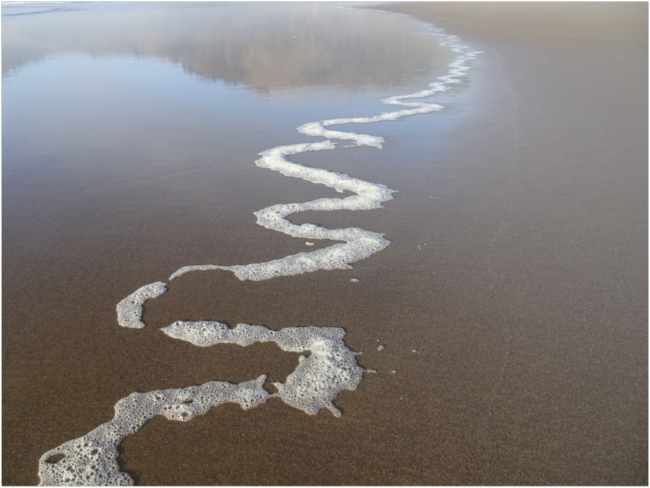
It will take work – a lot of work – to enable Cascade Head to live up to its potential as a laboratory and model. The ecological landscape is complicated enough, but compared to the complexity of what could be called the human “stakeholder landscape,” that may be the easy part to understand and manage. A partial list of “stakeholders” gives a sense of the challenge. One category is agencies or institutions with administrative responsibilities that require decisions about management, including US Forest Service, the Oregon Department of Fish and Wildlife, the City of Lincoln City, Lincoln and Tillamook counties, Oregon State Parks, the US Fish and Wildlife Service, NOAA, and the Confederated Tribes of Siletz and Confederated Tribes of Grande Ronde. Other important stakeholders include other landowners or land managers: the Salmon Drift Creek Watershed Council, The Nature Conservancy, Cascade Head Ranch, the Westwind Stewardship Group, the Sitka Center for Art and Ecology, and commercial timber companies such as Miami Corporation and Hancock Timber Resource Group. And then there are the academic and research institutions with important roles and interests, including Oregon State University and its Hatfield Marine Science Center. But the complexity of the human context here is typical, not unusual; every biosphere reserve I’ve worked in around the world has a similarly-complex social-ecological landscape.
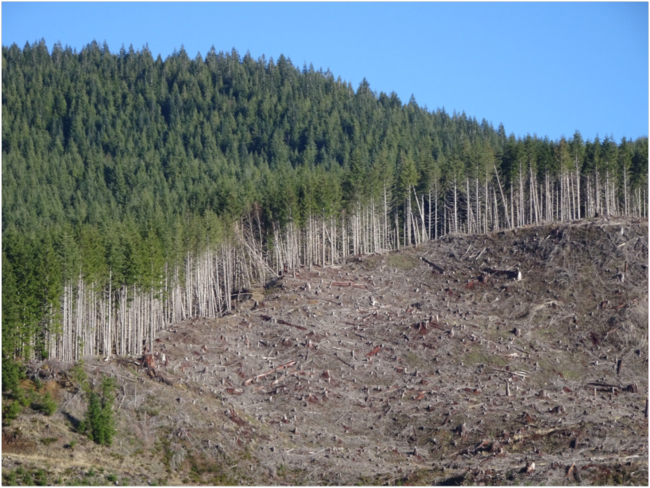
An inspiring part of the story at Cascade Head is how people who have spent time here have imprinted on this place, bonded with it because of their personal experience of its beauty and mystery, and translated their emotional relationship with it into actions to conserve what they love and value about it. Their stories are unequivocal in showing the importance of inspired, value-based, individual action: A few examples:
- The Portland lawyer whose family owned property at the mouth of the Salmon River who set in motion the political process that led to the creation of the Cascade Head Scenic Research Area;
- A young couple, artists and lovers of the outdoors, who set up a camp for kids that evolved into the Sitka Center for Art and Ecology;
- The young Oregon State University forestry student who spent a summer at here and who, later in his career, had risen to a position to have Cascade Head designated as a UNESCO biosphere reserve;
- The manager of the Cascade Head Experimental Forest, who early in her career set up the forest sampling plots in the Neskowin Crest Research Natural Area, and which, still being monitored, will provide information to understand the effects of climate change on these forests;
- The Forest Service hydrologist who oversaw the last stages of estuarine restoration in the Salmon River estuary, and stepped up to make the case that Cascade Head should remain in the UNESCO Biosphere Reserve network rather than dropping out in 2017, as some others did.
But our self-absorbed species is only one among the community of creatures, all of which play key roles in the evolving story of this unique place, and their stories inspire me also: the bald eagles, coho salmon, beavers, purple sea stars, Sitka spruces, marbeled murrelets, spotted owls, Oregon silverspot butterflies, and gray whales, to name a few.
“We’re all in this together” could be one way to state the first principle of ecology. It’s a scientific finding and fact, something that is as true as true can be, and which we ignore at our peril. At Cascade Head, as everywhere, the past histories and future destinies of the non-human and the human members of the biotic community are irrevocably intertwined.
We’d better start paying attention.
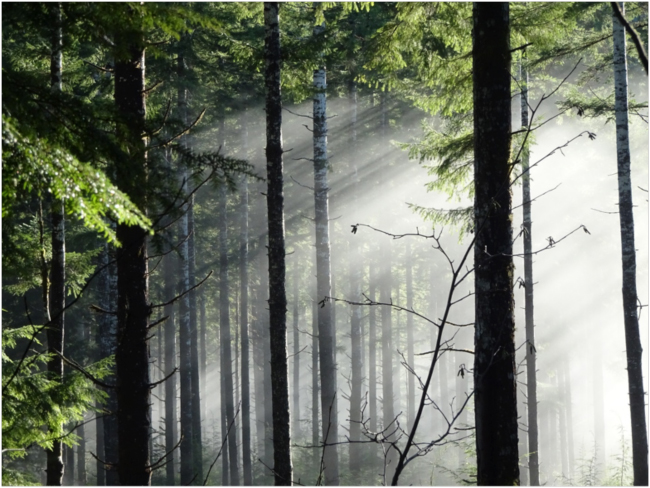
For related stories see:
- Monarch Field of Dreams: Reprise, September 2018
- Field of Dreams of Monarchs, October 2010
- Revisiting Cole’s View of The Oxbow, April 2018
- The Art of Ecology: Audubon’s Oystercatchers and Other Examples, October 2014
Sources and related links:
- Sitka Center for Art and Ecology
- Howard L. McKee Ecology Residency at the Sitka Center
- Kim Stafford Named Oregon Poet Laureate, May 2018
- Cascade Head: Oregon’s Biosphere Reserve: A Laboratory for Exploring the Relationship of People and Nature (research seminar at Oregon State University’s Hatfield Marine Science Center, 6 December 2018)
- Cascade Head Biosphere Reserve, Sitka Center Journal, 10 December 2018

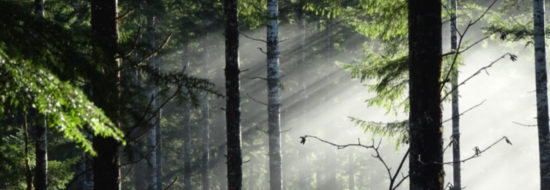



March 4, 2019 6:11 pm
This was wonderful to read Bruce! I think you made amazing use of your time and have been able to capture much of the ecological and human complexities at Cascade Head. Thank you!
March 5, 2019 12:37 am
Thank you for the feedback — AND for sharing YOUR deep knowledge of the place and helping me learn about the “ecological and human complexities!”
March 5, 2019 2:45 am
Congrats on the residency, Bruce. What a great honor! I’m sure that the folks at Cascade Head got a great deal out of your own global experiences in biosphere reserves and the comparisons.
March 27, 2019 4:46 pm
Beautifully written Bruce – was good to meet you while you was here in Siletz Country. Our Tribal people’s Relationship to the land is an important part of the story – and where the story starts (not with the stealing of it – and then turning it into the Siuslaw National Forest). Designations and Protections/Restoration are important – but understanding Siletz people’s relationship to and management of landscapes is important in developing a full understanding of how our particular brand of biodiversity once developed – and how the theft of our reservation (yanked from our Tribal people’s grasp), in violation of treaties, and commoditization of the timber, the fish, the wildlife, the land, conversion of uses (constructing levies, meadow to timberland, marsh to pasture, biodiverse-multispecies forests to overstocked mono-culture Douglas Fir tree farms, etc.), introduction of non-native species – loss of native keystone species – has led to the (somewhat degraded) condition it is in today – sadly though, it is one of of the more “intact ecosystem” examples here locally.
March 28, 2019 1:58 pm
Thank you for your thoughtful comment, Robert, and for all you did to introduce me to your Siletz community. The history of the treatment of the Siletz peoples is a sad and shameful chapter in American history, but your efforts to restore tribal identity and revitalize your culture are inspiring. I agree with you that those efforts have a direct bearing on healing the human relationship with the lands and waters of western Oregon. We are seeing, hopefully not too late, that the worldview that “commodified” the forest, the fish, and all of the biodiversity of that ecosystem is just not a sustainable or resilient worldview. We all need to work toward a reconciliation of all the people with each other, and with the lands and waters of the place. We need the knowledge and wisdom of the Siletz, and all Native American peoples, to move us toward a new worldview.